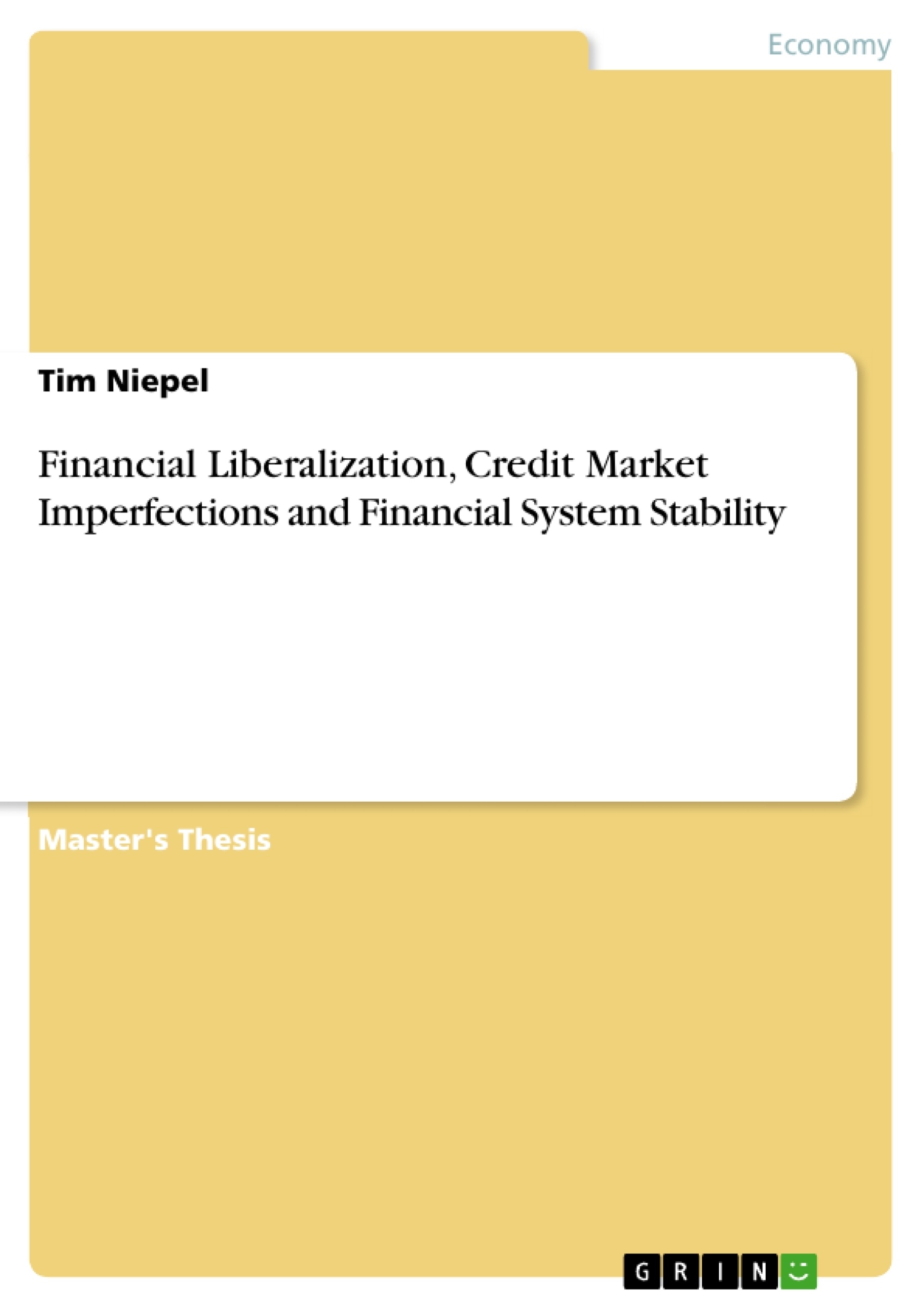Financial liberalization stimulates competition and thereby supposedly increases
the efficiency of investment. A simple credit market model is developed to show that such
efficiency improvements may be disturbed by competition-induced incentives for banks to
accept higher default rates, which result in instability of the financial system. Thereby we
offer a complementary explanation to the relationship between competition and stability in
financial markets. Consequently we argue that government intervention, in the form of
intelligent regulation, is necessary to ensure the development of sustainable financial
markets.
Inhaltsverzeichnis (Table of Contents)
- Introduction
- The Case of Bolivia
- Theoretical Framework
- Macroeconomic effects of financial liberalization
- Microeconomic effects of domestic financial liberalization
- Research question
- The Model
- Entrepreneurs
- Banks
- Credit default
- Optimal strategy
- Discussion
- Heterogeneous banking technologies
- The distribution of the individual cost to default
- Involuntary loan default
- Monitoring
- Provisioning
- Credit Bureaus
- Stylized Facts
- Limitations
- Conclusion and Policy Recommendations
Zielsetzung und Themenschwerpunkte (Objectives and Key Themes)
This paper explores the potential negative effects of financial liberalization on the stability of financial systems. The author argues that while financial liberalization can theoretically increase efficiency by promoting competition, it can also incentivize banks to accept higher default rates, leading to instability. The paper aims to contribute to the understanding of the relationship between competition and stability in financial markets, and to emphasize the need for regulation to ensure sustainable financial development.
- The impact of financial liberalization on credit market efficiency and stability
- The role of competition in influencing bank risk-taking behavior
- The potential for unregulated competition to lead to increased credit default rates
- The need for government intervention in the form of regulation to mitigate risks and promote sustainable financial markets
- The case of Bolivia as an example of the consequences of financial liberalization and the emergence of an over-indebtedness crisis
Zusammenfassung der Kapitel (Chapter Summaries)
The introduction sets the stage by discussing the historical context of financial liberalization and its theoretical justification. It highlights the potential benefits of increased efficiency but also acknowledges the emerging concerns about its impact on financial stability. The paper focuses on the case of Bolivia, which experienced an over-indebtedness crisis after implementing financial liberalization policies. The author argues that this crisis resulted from the changing lending methodologies of financial institutions in response to fierce competition. The paper then introduces a theoretical framework, outlining the macroeconomic and microeconomic effects of financial liberalization and the research question.
The model presented in the paper focuses on the relationship between credit default rates, lending methodologies, and competition. It examines how banks, as informed lenders, may choose to accept higher default rates in a competitive environment. The discussion section explores various extensions and variations of the model, considering factors such as heterogeneous banking technologies, involuntary loan default, and the role of monitoring and provisioning. It also examines the limitations of the model.
The final chapter concludes the paper by summarizing the key findings and offering policy recommendations. It emphasizes the importance of regulation to ensure sustainable financial development and to mitigate the potential risks associated with unregulated competition in financial markets.
Schlüsselwörter (Keywords)
The paper focuses on the key concepts of financial liberalization, credit market imperfections, and financial system stability. It examines the relationship between competition and risk-taking incentives of banks, particularly in the context of asymmetric information and endogenous credit default. The paper utilizes a theoretical model to analyze the potential for financial liberalization to lead to instability in financial markets. It also highlights the need for intelligent regulation to ensure the development of sustainable financial markets.
- Quote paper
- Tim Niepel (Author), 2013, Financial Liberalization, Credit Market Imperfections and Financial System Stability, Munich, GRIN Verlag, https://www.grin.com/document/300068



